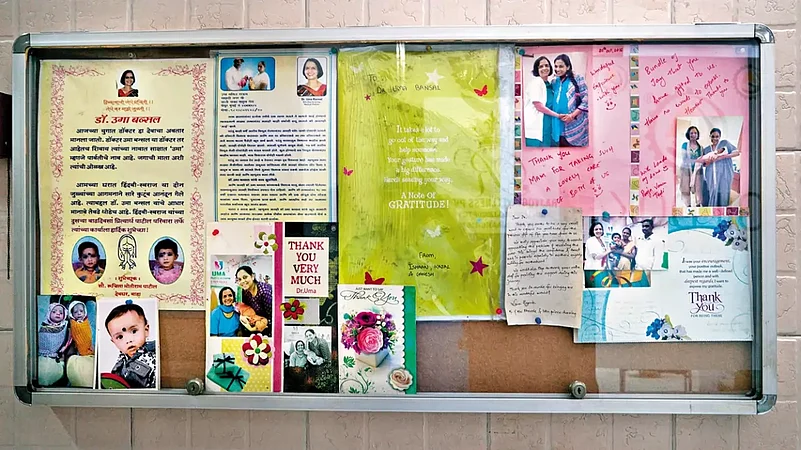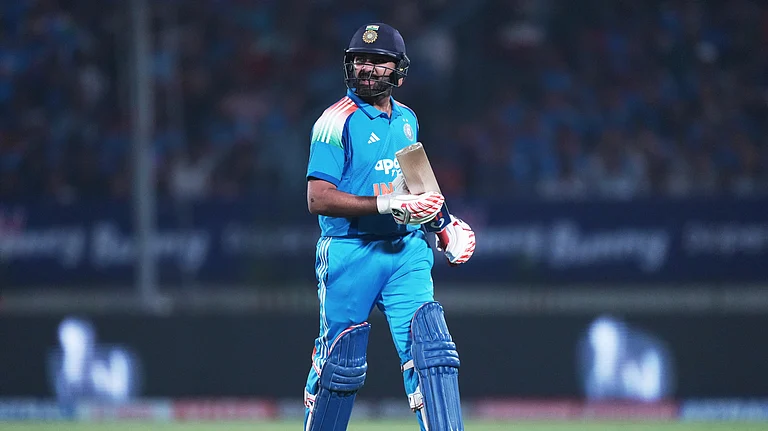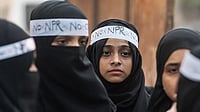Meena lives in a village in Jalna district of Maharashtra. When she failed to conceive even after four years of marriage, the couple approached a doctor at the district hospital, who advised the family to opt for a test tube baby. After many deliberations, the family decided to give it a try. A private practitioner in Jalna took over Meena’s case. It took two years, but today, Meena is a mother to one-month twin daughters. It will, however, take the family some time to repay the debt incurred for the treatment. They even had to sell a portion of their land.
Lena, 44, who lives in an affluent suburb of Mumbai, is pregnant with her second child. After losing her teenage son to Covid, the grief-stricken couple opted for an assisted pregnancy six months after their son’s death. Though the doctors warned them of all the age-related complications, the couple decided to give it a try. After several cycles of in vitro fertilisation (IVF), Lena is now three months pregnant.
A desire to have a child is the one factor that binds the stories of Meena, Lena and many other women across India who are not able to conceive naturally. Crucial factors like age, medical complications and the high cost of treatment are not a deterrent.
The Assisted Reproductive Technology (ART) sector offering a lifeline to childless couples has picked up speed in the decade gone by, say medical practitioners. Not just in urban setups, clinics offering infertility treatments including IVF, Intrauterine Insemination (IUI), Intracytoplasmic Sperm Injection (ICSI) and surrogacy have sprung up in Tier II and III towns and cities as well. None of the fertility treatment costs below Rs 1 lakh and despite the fluctuating success rates, the sector is booming. These treatments are undoubtedly a boon for those women who fail to conceive naturally. However, many women in their 40s and 50s in urban, semi-urban and rural set-ups too are opting for these treatments.

According to a World Health Organisation (WHO) 2022 report, about 48 million couples and about 186 million individuals live with infertility across the globe. The size of the global ART market is expected to grow from $26.28 billion in 2021 to $62.05 billion in 2026 at the compound annual growth rate (CAGR) of 19.1 per cent. In India, the ART market is expected to record an eight per cent increase between 2022 and 2030, according to statistics by the data and analytics company GlobalData.
The Rural-Urban Fertility Divide
A census on fertility status of India is done every 10 years. As per the last census conducted in 2016, the rural-urban divide in the fertility status of women has narrowed down. Birth rates have declined in Andhra Pradesh, Delhi, Himachal Pradesh, Jammu & Kashmir, Karnataka, Kerala, Maharashtra, Odisha, Punjab, Tamil Nadu, West Bengal, Uttarakhand, and Telangana.
Bihar has seen the highest birth rate among the rural areas in India, with Uttar Pradesh holding the top position for the urban areas of the country, indicates the census report. The lowest birth rates have been recorded in the rural areas of Kerala and the urban areas of Himachal Pradesh.
The findings of this census indicate that the decline in infertility rates is more in the rural areas, except in the age group of 20-24 years. During the last decade, fertility declined in the older age group (above 24 years) in the rural areas and rose in the same group in the urban areas.
Decline in marital fertility in women aged 30 years and above is a worrisome trend in both rural and urban areas of the country, indicates the census. Demographers are surprised that even in states like West Bengal and Telangana, where the rate of early marriages is high, there is a sharp decline in the fertility rates in women.
High Infertility: A Worrying Trend
Around 17.5 per cent of the adult population—roughly one in six worldwide—are affected by infertility in their lifetime, says WHO. The General Fertility Rate (GFR)—the number of children born per 1,000 women in a year in the reproductive age group (15-49)—has declined in India by 20 per cent over the past decade. The GFR in India stood at 86.1 in 2008-10. It has come down to 68.7.
In recent years, hospitals are seeing an alarming increase in tubal infections in women of varying age groups, says Dr Ashok Anand, head of Gynaecology and Obstetrics at the Sir JJ Group of Hospitals. “Lack of access to potable water is the primary reason for tubal infections in women from rural areas. The lack of menstrual hygiene due to social taboos and the lack of access to clean sanitary pads is another reason for tubal infections,” he says.
According to Dr Pradeep Chitre, an IVF specialist, there is an increasing decline in regular post-marital conjugal relationships. “Also, many of the career-oriented women are freezing their eggs for future use,” he adds. The success of the Frozen Embryo Transfer (FET) cycle is 60 per cent, while in the case of fresh embryos, the success rate is only 30-35 per cent, he informs.
Male infertility is also the root cause in over 50 per cent of the cases of childless couples who visit the fertility centres, say medical practitioners.
Dr Uma Bansal, obstetrician and gynaecologist, feels the rampant practice of ART has been disturbing the social structure of society. “There is a practice of extracting more mature oocytes from the egg donors and the same is given to multiple women who are childless. Even if children are born elsewhere, they are siblings. This affects the social structure,” she says.
However, the clause in the ART Act says that only seven mature oocytes should be taken from the egg donor. This clause should be deleted from the Act as it is difficult to extract only seven oocytes, she says.
The High-Cost Factor
Ankur S took a personal loan for home improvement to fund the IVF treatment of his wife, who is now six months pregnant. “We went through the treatment multiple times before my wife got pregnant. Every IVF cycle has cost us over 1.50 lakh. The amount of the loan is huge and we are paying the monthly EMIs,” says Ankur.
“Many of the gynaecologists are not keen on practicing obstetrics. They are moving on to offering infertility treatments as it is a very big market. The out-patients departments (OPDs) of ART clinics and government hospitals are always full. That is the size of this market,” says Anand.
Regulating the Sector
There are a lot of illegalities in this sector. The dropout rate or discontinuation of treatment is an issue with fertility clinics. Many women give up due to the side effects of the fertility drugs, complications in pregnancy or increased risk of birth defects, says Bansal.
To regulate this growing market, the centre has enacted the Assisted Reproductive Technology (Regulation) Act, 2021 outlining the code of conduct for those offering infertility treatments as well as surrogacy. The focus of this Act is to regulate and supervise all clinics providing assisted reproductive technology treatments and sperm banks and preventing the misuse of the procedure while providing services in a safe and ethical manner.
(This appeared in the print as 'Assisting Desire')


























